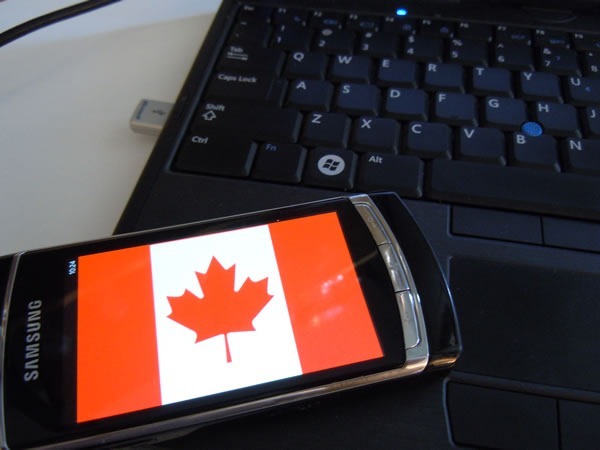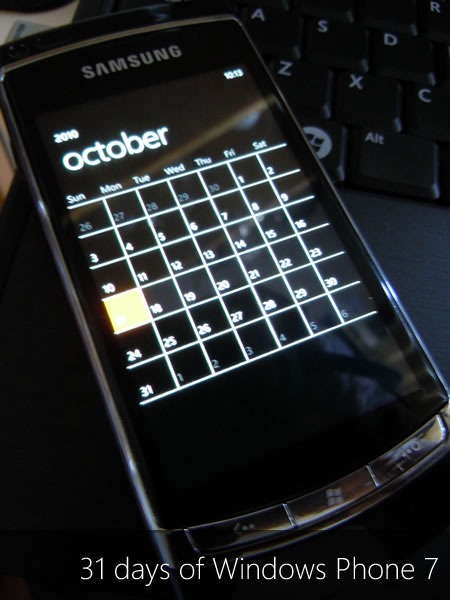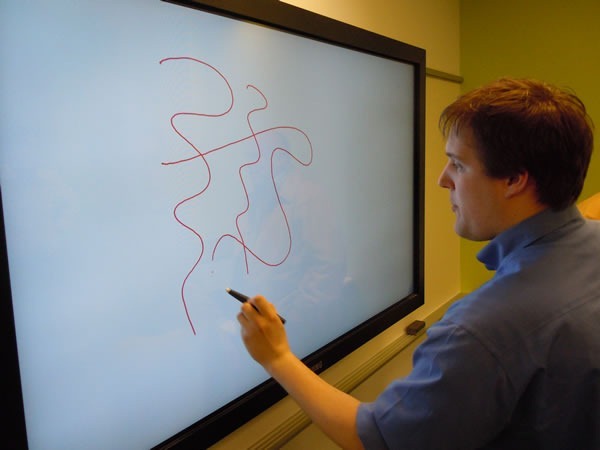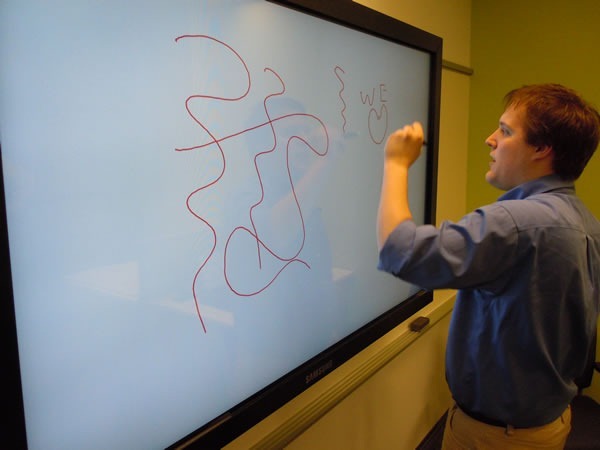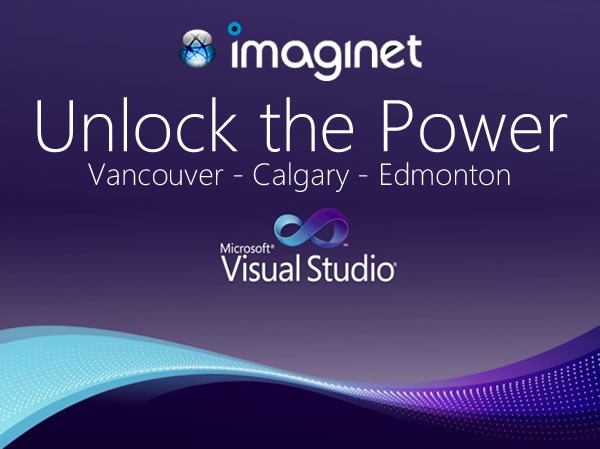It’s going to be a busy week for Yours Truly…
Monday: Windows Phone Deployment Clinic
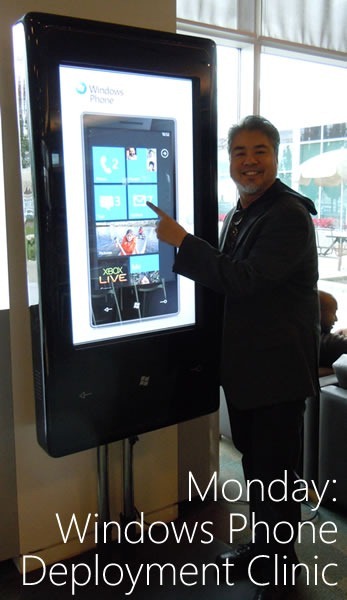
On Monday, I’ll be helping out at the Windows Phone Deployment Clinic at Microsoft Canada HQ in Mississauga (1950 Meadowvale Boulevard, off Mississauga Road, north of Highway 401), where you can book some time to test your apps on a real Windows Phone 7 device. If you’ve got an app and you’re going to be in the area, drop me a line and book an appointment!
(By the bye, that thing I’m standing beside in the photo above is a promo device known colloquially as the “Big-Ass Phone”.)
Tuesday: AndroidTO and TechDays Setup
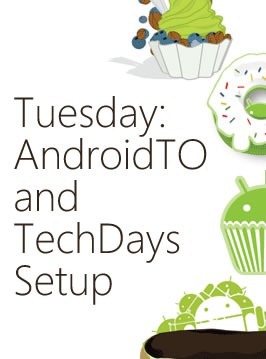
On Tuesday, I’ll be spending some time at the AndroidTO conference, a gathering of Android developers, where I’ll be minding the Windows Phone 7 booth. Yes, that’s right, Microsoft is a gold sponsor at an Android conference. Why? Because:
- We feel that if you’re an Android developer, go ahead an build Android apps, but expand your market reach by developing for Windows Phone 7 too! The programming languages and layout markup are similar.
- If you’re an Android developer, what’s the best OS for doing development? We think it’s Windows 7, which is a great environment for Java. Loads of great Java dev tools run on Windows, and we don’t consider Java to be deprecated.
AndroidTO takes place at the Polish Combatants Hall (206 Beverley Street, just south of College), is free-as-in-beer, and is alas, completely booked solid.
I’ll also be doing some setup for TechDays Toronto, which takes place on Wednesday and Thursday.
Wednesday: TechDays Toronto and Go DEVMental
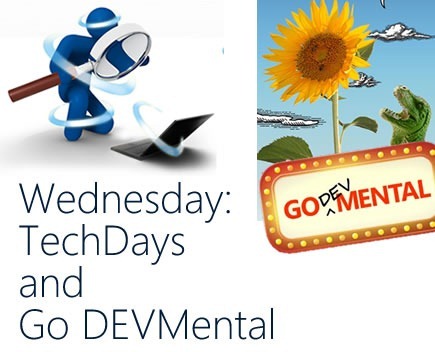
Wednesday brings with it TechDays, Microsoft Canada’s cross-country tech conference: two days of great sessions for developers and IT pros who are building stuff with the Microsoft stack. I’m the guy who picked the content for both developer tracks, “Developing for Three Screens and the Cloud” and “Optimizing the Development Process”. I strove for the best mix of both technology-specific stuff like Mark Arteaga’s Windows Phone 7 sessions and Kate Gregory’s Windows API Code Pack presentation as well as practice-of-programming sessions such as “Top 10 Mistakes in Unit Testing” and “Branching and Merging Strategies”. TechDays will occupy me from 7 a.m. until 5 p.m..
From 7 p.m. on, it’ll be Go DEVMental, the student event where we’ll show university and college students what’s possible with Microsoft’s web and mobile platforms. I’ll be doing a presentation on getting starting with game development for Windows Phone with an amusing little live-coded game called “BieberSmash”, starring the bubblegum pop idol of the moment. Go DEVMental is free and open to post-secondary students – just bring your student ID! You’ll get all sorts of goodies, including a DreamSpark token and Visual Studio 2010 Pro.
Both TechDays and GoDEVMental take place at the Metro Toronto Convention Centre’s South Building (222 Bremner Boulevard, right beside the CN Tower).
Thursday: TechDays, Day 2

Thursday means another full day of the TechDays conference, to be followed by some very strong whiskey-based drinks.
Friday: Coffee and Code
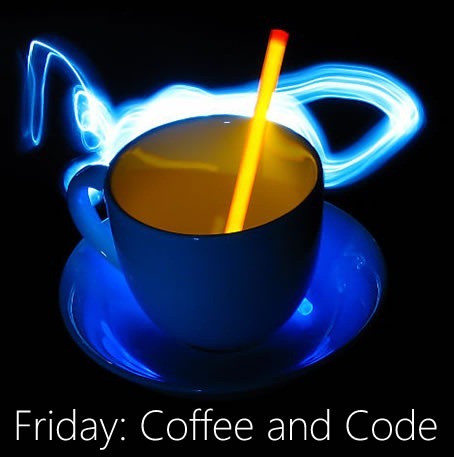
I’ll be running a Windows Phone 7 Coffee and Code this Friday from 11 a.m. to 5 p.m. at the Timothy’s at 225 Front Street West (in the Metro Toronto Convention Centre building). I’ll be hanging out at the cafe, working on Windows Phone 7 code on both the emulator and real Windows Phone devices. Want to learn more about Windows Phone 7, see a real-live phone, play some games or test your code? Come on down!
Saturday: ACSE Conference
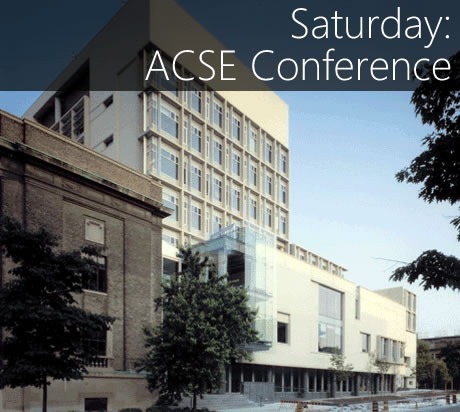
University of Toronto computer science prof Steve Engels invited me to speak in front of a group of high school teachers at the ACSE (Association for Computer Studies Educators) Conference taking place on Saturday. I’m going to be showing them programming for high school students on Windows Phone as well as with the Kodu game development environment.
…and Sunday?

Well, it won’t be all sleep. I’ll have to pack for my Monday flight to TechDays Halifax!

